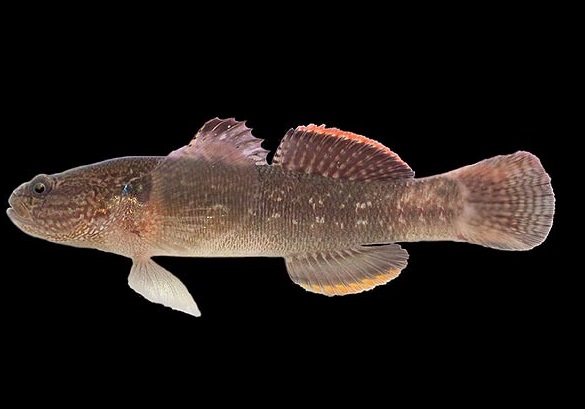Two Shimofuri gobies were caught by a fisherman in the Ghent-Terneuzen Canal in November 2022, marking the first time this Asian fish species, which can grow up to 12 centimetres long, has been observed in Europe.
Natuurpunt and the Flemish Institute for Nature and Forest Research (Instituut voor Natuur- en Bosonderzoek – INBO), which made the disclosure on Tuesday, said they would monitor whether the species becomes established in the region on a long-term basis.
The two specimens were caught during an angling competition, INBO staffer Hugo Verreycken reported.
One-third of inland species are non-native
Coincidentally, Pieterjan Verhelst, the angler who made the catch, is also a member of the Institute. His expertise on the subject proved useful, as Shimofuri gobies “are very difficult to identify because of their many shades of colour,” Verreycken explained. “‘Shimofuri’ actually means ‘marbled’ in Japanese.”
This fish, native to Japan, China and South Korea, is therefore a new exotic species in Belgian and European waters, but it is far from being the only one. According to one estimate, about one-third of the 75 species living in our country’s rivers and canals are non-native, i.e. they do not occur naturally in these waters.
This includes long-established species such as carp and pike-perch, as well as fish that are only found more sporadically, such as the sterlet and blue bream.
Non-natives may have arrived in ships' ballast tanks
According to INBO, these fish may have arrived in Europe in ballast tanks, water-filled spaces used to ensure the stability of ships. If this water is discharged somewhere other than where it was collected, the fish it contains can spread outside their natural habitat.
Traps will be set up in the coming months to determine whether any more Shimofuri gobies are in the canal. According to Hugo Verreycken, these fish are certainly capable of thriving in Belgium, as their survival does not require specific food, habitat or temperatures.
It is not certain, however, that they will be able to establish themselves permanently in the Ghent-Terneuzen Canal. Another exotic species, the round goby, also lives in the waterway.
Highly invasive rival
This species, which originates from the Caspian Sea, is highly invasive, which means that it competes with other fish, notes Verreycken.
“In 2013, two or three individuals were found over a distance of about 60 kilometres in the Grensmaas, the meander of the Meuse that marks the border between Belgium and the Netherlands. Ten years later, it has become the most common species: we are talking about hundreds of thousands of individuals.”
The disappearance of the sculpin, a threatened native species, is linked in particular to this invasion of round gobies.

